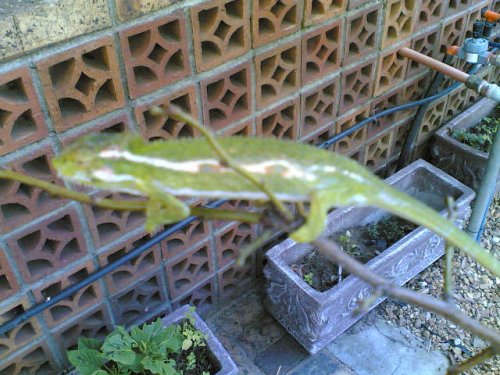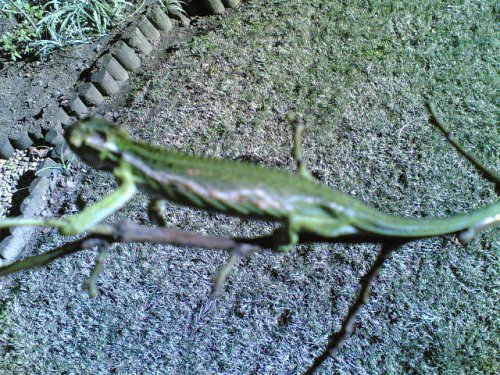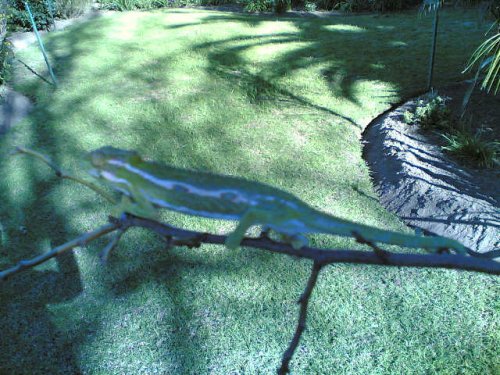When we were young we always had chameleons in our garden. Unfortunately we also had chickens and I once witnessed a cock eating on of the chameleon offspring. I wanted to kill the thing.
The chameleon population decreased and due to lack of interrest we didn't really look for them much.
Recently upon returning to my parents place I noticed that there is still a few chameleons left. I found one in a prune tree and took it through the garden for a few meals. It ate 4 flies and then I returned it to the tree. I now noticed that it stays in that tree. I would really like to see the population increase to high numbers again.
What ways are there to care for and boost the population of chameleons found in the garden without capturing them. I am trying to think of things I can add. I suppose adding a water bottle which drips water to its tree will help?
Is there any ways to attract edible insects to the tree?
Any suggestions/ideas will be very welcome.
The chameleon population decreased and due to lack of interrest we didn't really look for them much.
Recently upon returning to my parents place I noticed that there is still a few chameleons left. I found one in a prune tree and took it through the garden for a few meals. It ate 4 flies and then I returned it to the tree. I now noticed that it stays in that tree. I would really like to see the population increase to high numbers again.
What ways are there to care for and boost the population of chameleons found in the garden without capturing them. I am trying to think of things I can add. I suppose adding a water bottle which drips water to its tree will help?
Is there any ways to attract edible insects to the tree?
Any suggestions/ideas will be very welcome.





